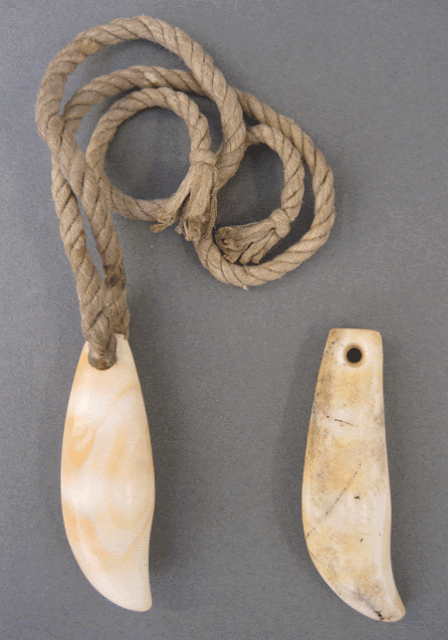 |
| Forster No.133 Mus. No. 1886.1.1269 |
This breast ornament was collected on Tahuata in the Marquesas in April 1774. Forster, in 'A Voyage Round the World' describes this 'glaring ornament', saying that 'their leaders wore a kind of gorget around the neck, or rather on the breast; it consisted of small portions of a light wood, like cork, glued together with gum, in a semicircular form; a quantity of scarlet beans (abrus precatorius, LInn.) are glued all round it with the same gum, forming a great number of rows, of the length of two or three inches.'
The gorget, known as a tahi poniu, is made up of seventeen sections of wood. The red and black abrus seeds have been set in a thick layer of brittle brown resin, said to be gum from the breadfruit tree.
 |
| Microscope image of gum |
As part of this project, samples of the gum were taken and will be analysed by scientists at the University of Bristol.
 |
| Sampling from 1886.1.1269 |
The gorget is missing quite a few seeds - even in 1884 when the collection was transferred from the Ashmolean Museum it was noted that 'many of the berries have come off this ornament and have been stuck from time to time with glue and many are wanting,particularly from the back edge.' The back of the gorget has been extensively repaired, with new sections of plywood added to replace missing or damaged areas. This was done before conservation records were kept.
 |
| The back of the gorget. Replacement plywood rays can be seen near the top of the image. |





